https://ift.tt/3129ap5 Coffee Data Science A short experiment to help understand the benefits of sifting I recently participated in a dis...
Coffee Data Science
A short experiment to help understand the benefits of sifting
I recently participated in a discussion online about how much pressure is required to get water to flow through coffee. However, it isn’t the coffee itself but the solubles and CO2 gas within the coffee that slows extraction. Water flows through spent coffee very quickly, so it is only the workings of these two other variables that slows the flow.
Let’s consider the staccato shot. After seeing hundreds of videos of staccato shots and regular shots, I noted the start of the staccato shot was much darker than a regular shot. I started to get curious how coffee grounds degas based on particle size as that might help explain why a staccato shot works so differently than a regular shot.
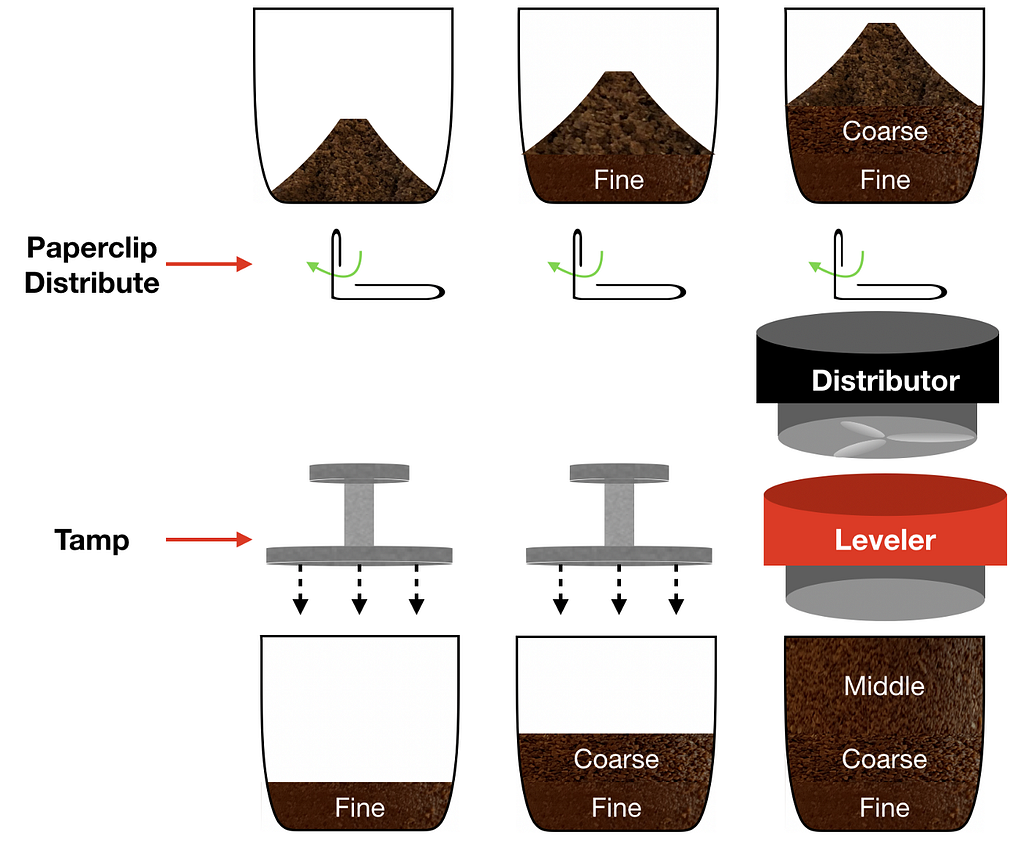
I found in my experiments that coarser coffee had more CO2, and I suspect by isolating them from the finer particles, a staccato shot flows better.
Typically, the first 10g of a staccato shot are very dark in color which is a function of high extraction and low CO2. It is not surprising the color really changes after that as more blonding occurs but maybe the striping is also caused in a great deal by CO2 being released.
Data
I started with some visual data. I compare two shots here with similar input and same output. However, the staccato shot stays darker for a long time. I’ve seen this pattern often throughout my video data.
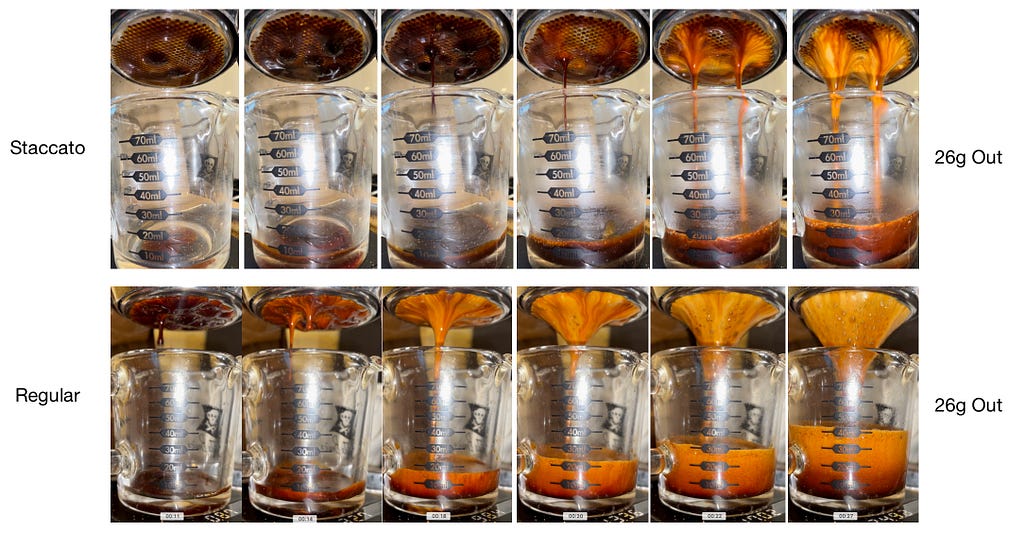
I did a study on extraction yield per grind size, and I looked back at that data to see if the videos showed differences in color in the cup consistent with CO2 releases. The main issue with this data is that the shot was 75% spent coffee, 25% new coffee, and the coffee wasn’t sifted. I looked at the finest (Setting 0 on the Niche Zero) and the coarsest (Setting 20):
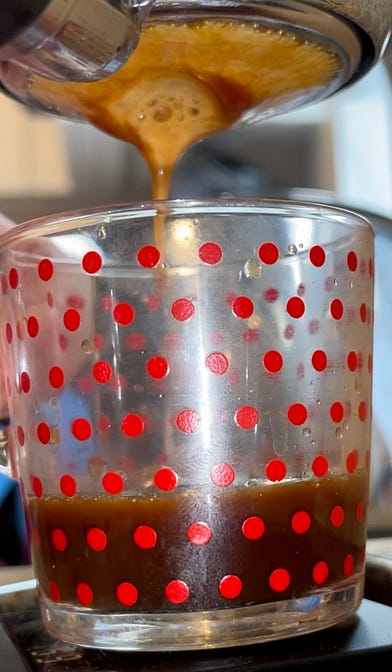
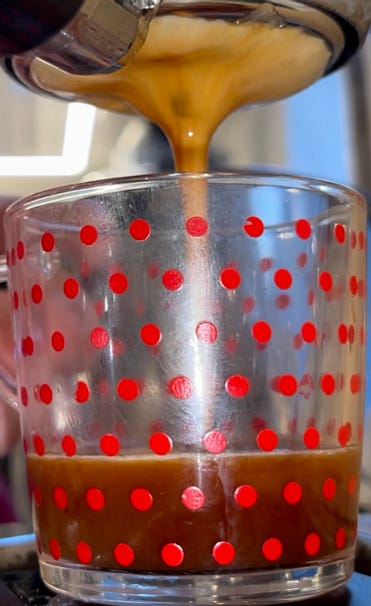
Both settings didn’t have a lot of foam, but the setting 20 had a lighter color that was a bit of CO2 bubbles and less extraction. However, these two effects were intertwined and difficult to separate.
Design of Experiment
I wanted more definitive data that was not tied to other variables. I wanted a better idea of how much CO2 gas retained due to the grind size so I sifted. However, I didn’t want to spent a bunch of money on equipment to measure the exact amount of CO2 released. I tried this experiment to see if I could get a qualitative view of how CO2 released differs by grind size.
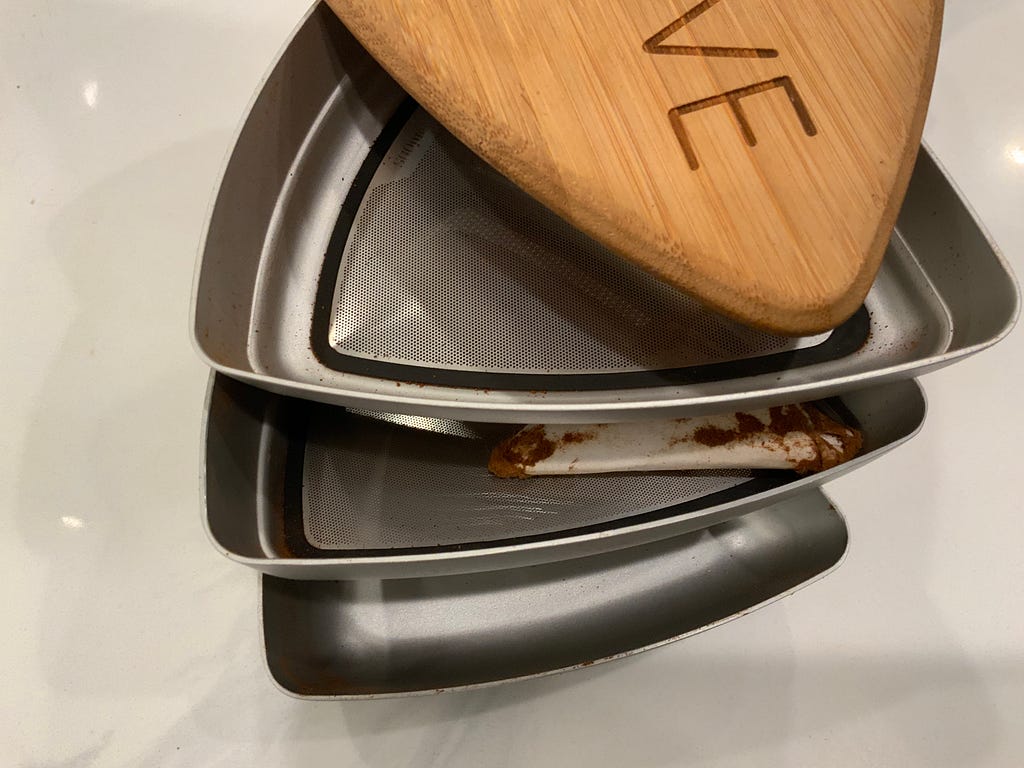
I used a 400um and 500um screens for a roast that was only two days old. It should have close to maximum carbonation. I ground the beans at setting 9 on the Niche. The breakdown was 40%, 30%, and 30% for <400um, between 400 and 500um, and >500um respectively.
I then put some samples in an ice cube tray at 1g each.
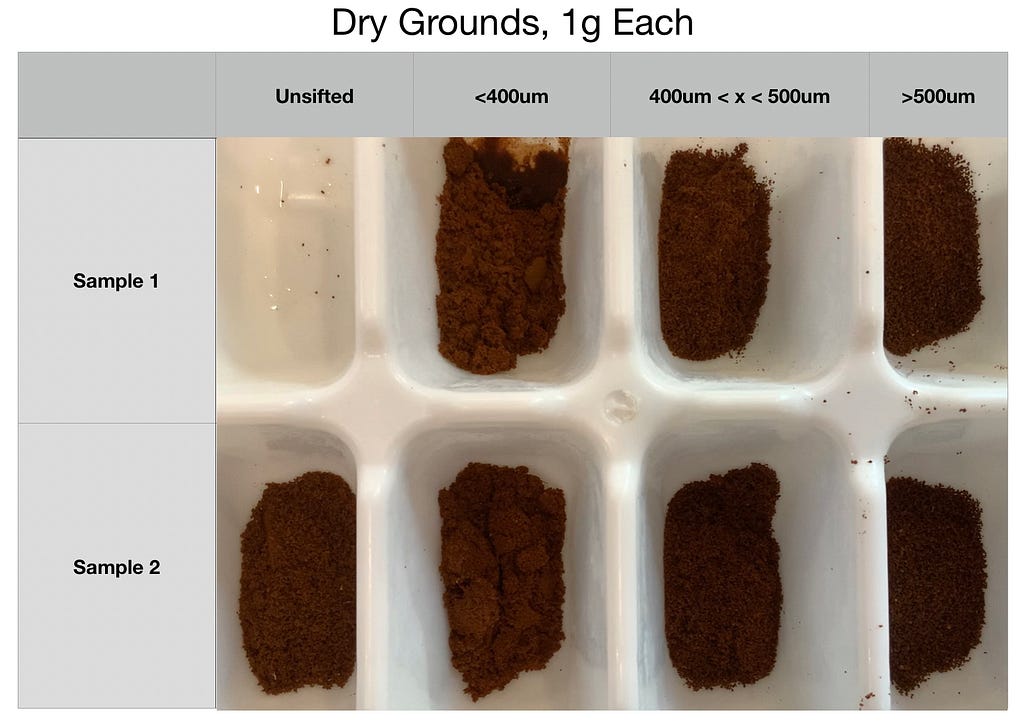
I heated water in the microwave to around 90C, and I used a scale to add 3g of water per sample while taking a video.
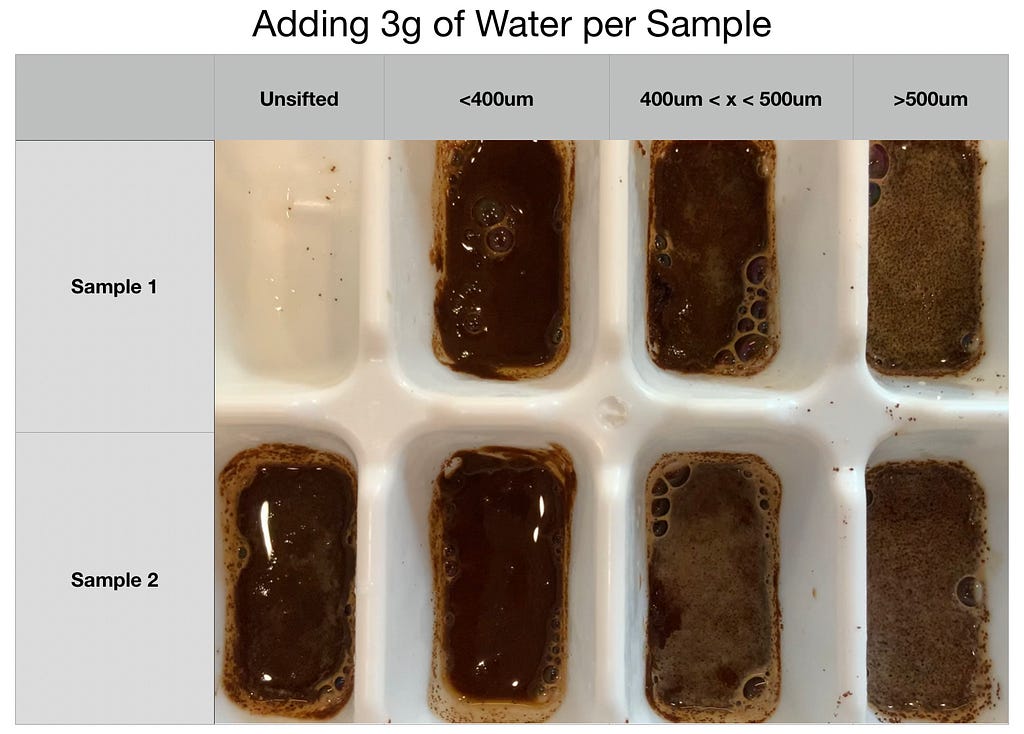
The coarser coffee has more foam and bubbles. It stabilized so I stirred each just to see what would happen.
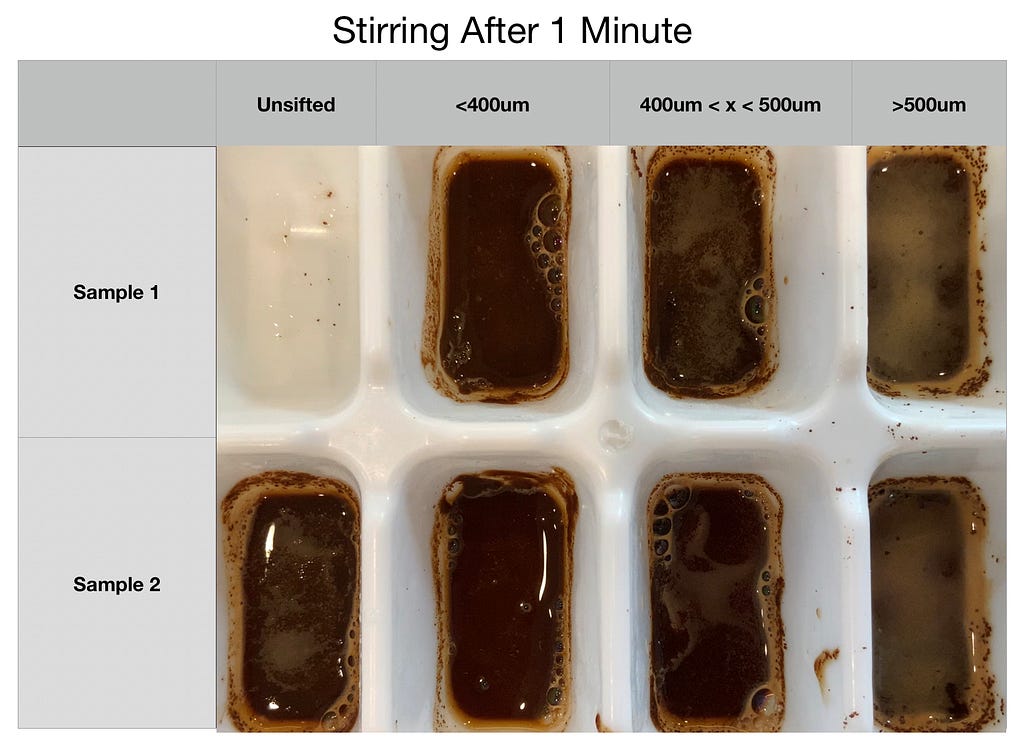
The <400um had almost no foam or bubbles indicating that it didn’t have any more CO2 to be released. That’s probably in part because the surface area to volume is much higher for smaller particles. It had a few larger bubbles from mixing but not from CO2 in the same way as the coarser grinds.
One minute after stirring, most of the bubbles went away.
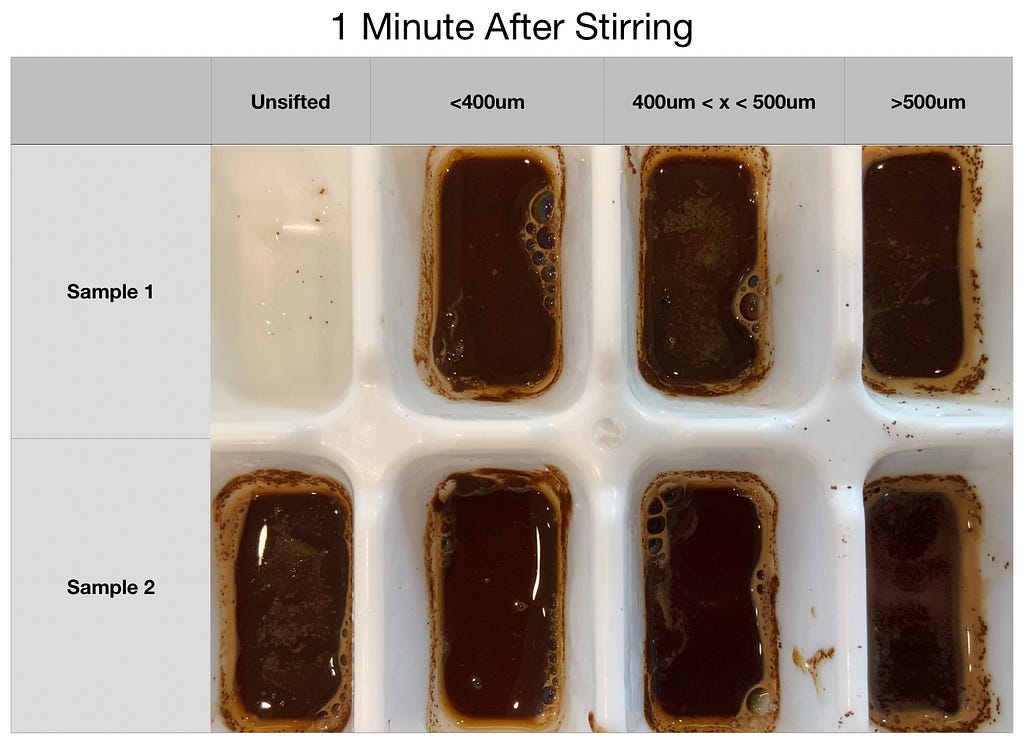
There wasn’t much of a change for the <400um samples, but the other two had a cloud of foam disappear.
Originally, I wanted to buy more complex equipment to be able to quantify the amount of CO2 released during extraction by grind size. However, I settled on this experiment because it shows a hunch was correct.
The larger story of this study is that in a staccato shot, the fine layer (<400um) sits on the bottom. Since that layer doesn’t have much CO2 released, its flow is primarily restricted by solubles, and the flow increases as more is extracted. The fine layer has a higher extraction yield than the other two layers, and CO2 might be limiting their extraction outside of being a larger grind size.
CO2 bubbles in espresso aren’t well studied. I have looked at this issue using a make-shift transparent portafilter, but it was an observation without much connection to the rest of the shot.
This concept gives more evidence that the staccato method is superior in extraction fundamentally because of how it changes how CO2 from larger particles interacts with smaller particles in the coffee puck.
If you like, follow me on Twitter, YouTube, and Instagram where I post videos of espresso shots on different machines and espresso related stuff. You can also find me on LinkedIn. You can also follow me on Medium and Subscribe.
Further readings of mine:
Collection of Espresso Articles
A Collection of Work and School Stories
Measuring Coffee Grind Particle Distribution using Image Processing
A Summary of the Staccato Lifestyle
Measuring Coffee Grind Distribution
Espresso Baskets and Related Topics
Transparent Portafilter Experiments
Espresso Coffee Farts: Examining Gases in Staccato was originally published in Towards Data Science on Medium, where people are continuing the conversation by highlighting and responding to this story.
from Towards Data Science - Medium https://ift.tt/3122O9d
via RiYo Analytics

ليست هناك تعليقات